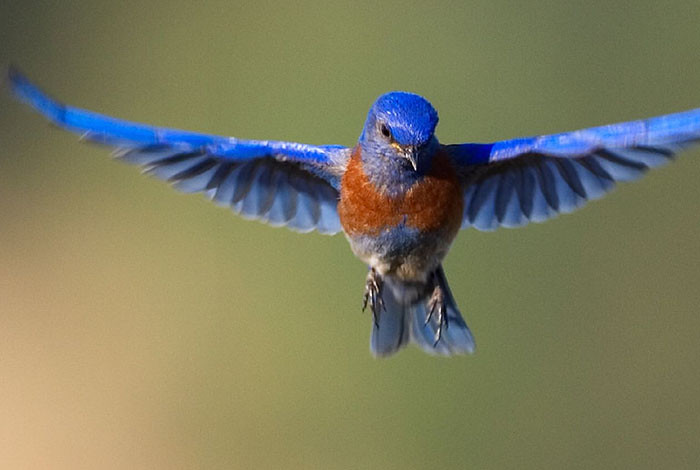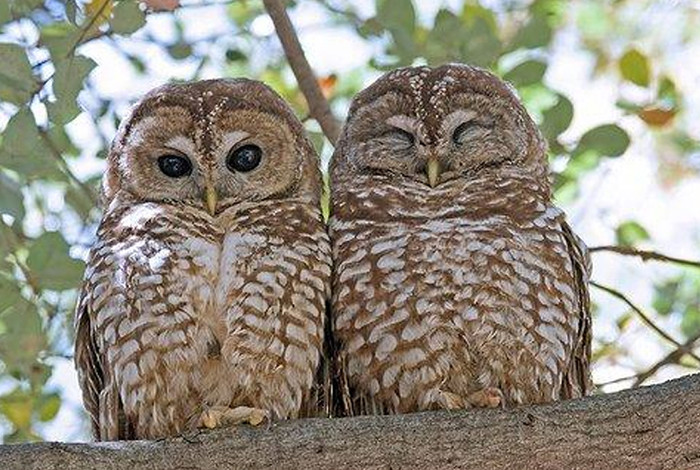Monitoring provides a bird’s eye view of avian populations

Western Bluebirds are seen often in and around Los Alamos. CREDIT: Dan Hutcheson
Long-term avian monitoring programs give an idea of the diversity and abundance of animal species on Lab property throughout the year. These programs include: mist netting and banding during bird breeding and migratory periods, winter and breeding bird surveys, threatened and endangered species surveys, and an avian nest-box network.
Mist netting allows researchers to safely catch and band birds that are either breeding or migrating in an area. At each of the two banding stations found at the Laboratory, 12–14 fine “mist” nets are set up shortly before sunrise and checked every 30 minutes for five to six hours. These nets are difficult to see and easily—and safely—catch birds that try to fly through them. Any birds found in the nets are carefully removed so that they can be banded or marked as a recapture (if they’ve already been banded). Then, data is collected, including sex, age, weight, tail length, and wing length. Finally, the birds are released unharmed.
Winter and breeding bird surveys are conducted as point-count surveys along straight lines in three habitat types. This means that scientists walk or drive for 250 meters before stopping at a point and listening and watching for birds. Each point lasts five minutes, and there are nine points total in each survey.
Likewise, information gathered in surveys of the endangered Mexican Spotted Owl, Southwestern Willow Flycatcher, and Yellow-billed Cuckoo can be used to infer information about habitat, climate, human disturbances, and other factors relating to these birds.
The avian nest-box network is a collection of more than 500 nest boxes (essentially birdhouses) that spans Los Alamos National Laboratory and several off site locations, which act as controls. The project has two target species: the Western Bluebird and the Ash-throated Flycatcher. During the breeding season, the boxes are checked regularly for occupation. Any resident nestlings are banded and sexed once they reach the proper stages of development.

Mexican Spotted Owls.
Each of these programs is an important part of understanding wildlife populations and possible effects on them. In addition to these programs, the Lab’s biological resources management team reviews projects from other areas of the Lab to help ensure that no adverse effects to biological resources occur from Laboratory operations.

Southwestern Willow Flycatcher.
To learn more and to see other articles about how the Laboratory’s operations might impact Northern New Mexico, please check out the recently published Annual Site Environmental Report Summary, which details the Lab’s commitment to environmental programs.






